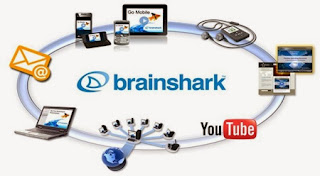Social
Networking Research Topic:
Facebook
How to Sign up for a
Facebook Account:
First get onto your computer and go to the web address www.facebook.com
From there the home page will pop up asking you to sign in as
a current member or to become a new member.
You will fill in your name, e-mail account, your gender,
birth date and finally create a password for your Facebook account.
Then hit sign up! Congratulations you are a member of
Facebook!
Once you hit
submit Facebook will have you find a few people to friend request, fill out
your profile, and add a profile picture.
To fill out
your profile you can pick which things to include and which to exclude. You can
choose to enter which high school/ college you attended or are attending, your
employer, and home town.
Then you
will set your profile picture, you do this by uploading a picture of yourself
saved to your computer or you can upload a picture of your favorite band, animal,
etc.
Once you
have completed these steps you can share your thoughts with your virtual
community. There will be a box at the top of the page that says “update status”
where you type what you want to share and then you hit enter on your keyboard.
The icon of a head above means you have a friend request, you
can either confirm or deny the friend request that was sent to you. The next
icon above is the message icon meaning someone has sent you a message. You click
on the message box above to view your message and send a reply. The globe icon
means you have a notification, this means that one of your friends have
requested that you play a game, commented on your status, or like a picture or
status that you posted to your Facebook page.
Under every
status or picture posted there is a “Like” button that you can click if you
like someone’s status or picture. There is a “home feed” where you can view
everything your friends have posted on Facebook.
Classroom Uses for Facebook:
Students can have group discussions that the
teacher can view and see that everyone is equally participating.
Teachers can
use Facebook to get acquainted with their students and for students to learn
about one another. Students can view
their classmate’s profiles to learn something about them. When students learn
something new they will post to their wall about what they learned. This also
teaches students to use social media in a responsible manner.
Resources:
How to use
Facebook - Guided Tour & Introduction Video
Pinterest
You can
start using Pinterest once you have a Facebook or an e-mail address. To join Pinterest
go to https://www.pinterest.com/join/. Once you have entered your
e-mail address or signed on to Pinterest using your Facebook account you will
create a password, hit submit, and presto you have a Pinterest account!
There will be pictures of anything and everything. To “Pin” something you like you will put your curser over the image and a “Pin It” button will pop up for you to click. Once you click “Pin It” a box will pop up that says “Pick a Board.” If it is your first pin you will need to create a board. You do this simply by typing a title for the image you selected. For example if I were to pin the “Eat Well Travel Often” image I might title that board “Quotes.”
You can
click the “Find Friends” button to see what your friends are pinning. When you
go to “Find Friends” you can “follow” your friends by clicking the “follow”
button. Friends from Facebook will pop up
for you to follow if you want.
You can
click the button at the top left to pick a general topic to look at or go to
your home feed where everything you and your friends have pinned. You can also
narrow down your search by typing in what you are looking for into the “Search”
box.
Classroom uses for Pinterest:
Teachers can
use Pinterest in the classroom by having students use Pinterest to find ideas
for their research topics.
Students can
create topic specific boards for their projects.
Students can
find ideas to use when presenting their topic.
Resources
for Pinterest:
Pinterest -
Tutorial Video
How to Use
Pinterest - Guided Tour Video
Twitter
Start by
going to the Twitter home page https://twitter.com/. From here you will
sign up for a Twitter account by entering you name, e-mail address and
password, then click submit.
Once you
have created an account the website will walk you through how to use Twitter.
You can tweet status updates that are 140 characters or shorter. Then the
website will ask who you want to follow. When you follow someone on Twitter
their tweets are on your home feed. You will
need to select five people to follow to begin. That is simple right?! Congratulations
you now have a Twitter account. You can follow friends, celebrities, sports
teams, etc.
You can
upload a picture of yourself and include a short biography.
Classroom
uses for Twitter:
The teacher
assigns students to pick a career they are interested in and follow feeds relevant
to that career choice. Students can keep a daily journal about their thoughts
on the career and what they learned from following people with that career.
Students can follow the issues to stay update on national and
international events.
Students can also create a poem that is 140 characters or less to tweet
to their audience. Students can give feedback to their classmates about the
poem. The teacher could assign two students to peer edit each other’s tweeted
poems and students can track how their poems evolved.
Resources
for Twitter:
How to Use
Twitter - The Basics Video
How to Use
Twitter - Basics For New Users! Video











